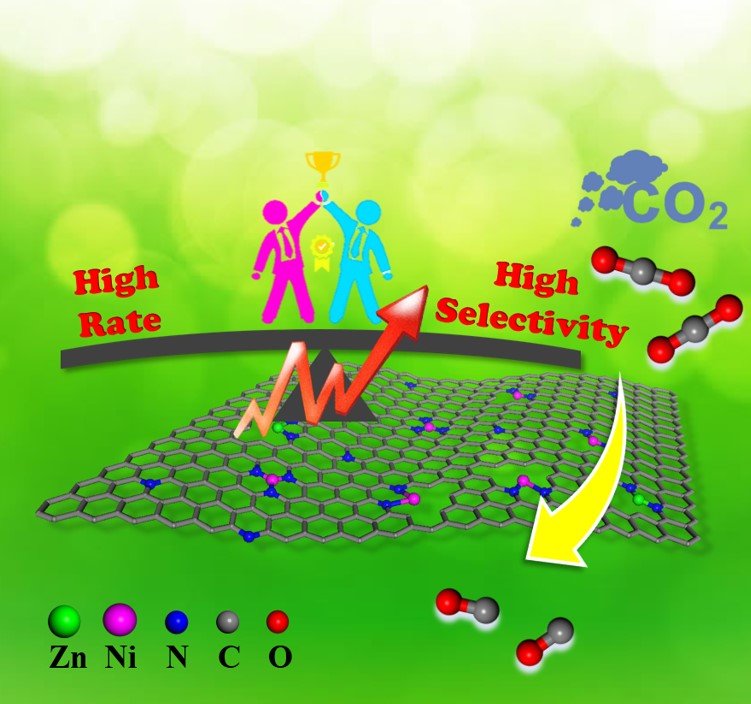Prof. Xinhe Bao’s research team in the State Key Laboratory of Catalysis has recently made research progress in electrochemical reduction of CO2 (CO2RR). The results are published in Energy & Environmental Science (Energy Environ. Sci., 2018,11, 1204-1210).
The electrochemical CO2 reduction is a potentially effective approach to achieve CO2 conversion and intermittent renewable electricity storage simultaneously, which assists in the construction of a sustainable energy network for carbon resources. In recent years, Prof. Xinhe Bao and Guoxiong Wang’s research team has endeavored to investigate CO2RR from the perspective of fundamental catalysis, and made great progress on nanosized Pd-based catalyst, metal-oxide interface and CO2 electrolysis on solid oxide electrolysis cell, significantly improving the selectivity, activity and stability of CO2RR (J. Am. Chem. Soc., 2015, 137, 4288; Nano Energy, 2016, 27, 35; Chem. Sci., 2017, 8, 2569; J. Am. Chem. Soc., 2017, 139, 5652; ACS Catal., 2018, 8, 1510; Angew. Chem. Int. Ed., 2018, 57, 6054; Nano Energy, 2018, 50, 43; Energy Storage Materials, 2018, 13, 207).
The research team has recently focused on the controllable preparation and electrocatalytic properties of transition metal-nitrogen-carbon composite materials (Energy Environ. Sci., 2016, 9, 3736; Nano Energy, 2017, 38, 281; ACS Catal., 2017, 7, 7638). In the previous research work, transition metal-nitrogen-carbon composite materials have demonstrated impressive Faradaic efficiencies for the CO2RR. However, the Faradaic efficiencies of the CO2RR drop rapidly, accompanying an increase in the overpotential in order to achieve high current densities. So far, transition metal-nitrogen-carbon composite materials have suffered the problem of achieving high current density while maintaining high Faradaic efficiency for the CO2RR, which is essential for the requirements of fast reaction rate and high reaction selectivity in future applications of the CO2RR.
In this recent published paper, they propose a strategy to facilitate the CO2RR through the construction of coordinatively unsaturated nickel–nitrogen (Ni–N) active sites within porous carbon, derived from the pyrolysis of Zn/Ni bimetallic zeolitic imidazolate framework-8 (ZIF-8), with a Ni loading as high as 5.44 wt%. The CO Faradaic efficiency is maintained between 92.0% and 98.0% over a wide potential range of -0.53 V to-1.03 V(vs. RHE), while the CO current density increases with the overpotential and reaches an unprecedentedly high value of 71.5 ± 2.9 mA cm-2 at -1.03 V (vs. RHE). Density functional theory calculations suggest that the CO2RR occurs more easily than the HER over the coordinatively unsaturated Ni–N site. Thus, both high Faradaic efficiency and current density of the CO2RR are achieved simultaneously.
This work was financially supported by Natural Science Foundation of China, National Key R&D Program of China, Dalian Institute of Chemical Physics and Strategic Priority Research Program of the Chinese Academy of Sciences. (By Chengcheng Yan and Haobo Li)
